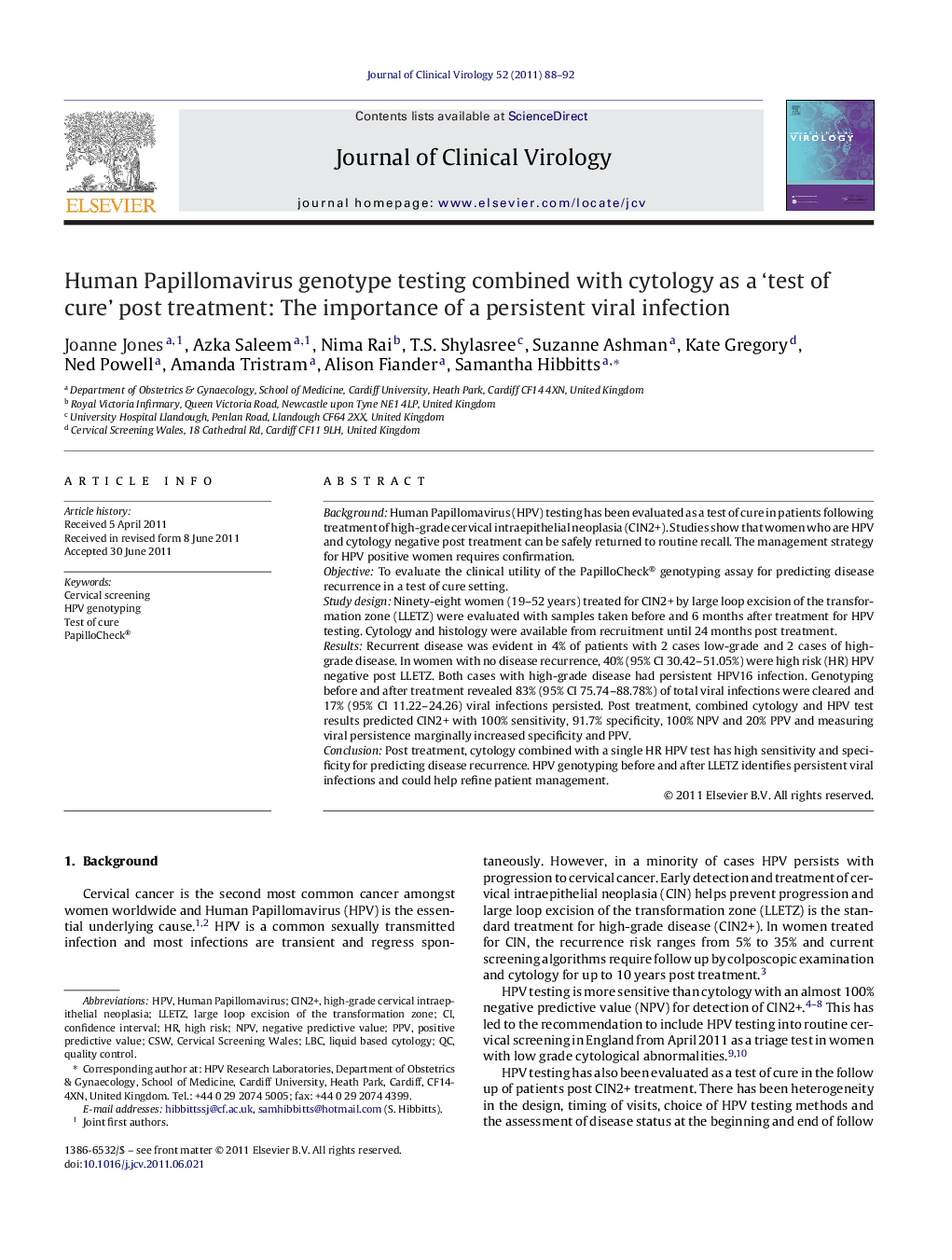| Article ID | Journal | Published Year | Pages | File Type |
|---|---|---|---|---|
| 3369075 | Journal of Clinical Virology | 2011 | 5 Pages |
BackgroundHuman Papillomavirus (HPV) testing has been evaluated as a test of cure in patients following treatment of high-grade cervical intraepithelial neoplasia (CIN2+). Studies show that women who are HPV and cytology negative post treatment can be safely returned to routine recall. The management strategy for HPV positive women requires confirmation.ObjectiveTo evaluate the clinical utility of the PapilloCheck® genotyping assay for predicting disease recurrence in a test of cure setting.Study designNinety-eight women (19–52 years) treated for CIN2+ by large loop excision of the transformation zone (LLETZ) were evaluated with samples taken before and 6 months after treatment for HPV testing. Cytology and histology were available from recruitment until 24 months post treatment.ResultsRecurrent disease was evident in 4% of patients with 2 cases low-grade and 2 cases of high-grade disease. In women with no disease recurrence, 40% (95% CI 30.42–51.05%) were high risk (HR) HPV negative post LLETZ. Both cases with high-grade disease had persistent HPV16 infection. Genotyping before and after treatment revealed 83% (95% CI 75.74–88.78%) of total viral infections were cleared and 17% (95% CI 11.22–24.26) viral infections persisted. Post treatment, combined cytology and HPV test results predicted CIN2+ with 100% sensitivity, 91.7% specificity, 100% NPV and 20% PPV and measuring viral persistence marginally increased specificity and PPV.ConclusionPost treatment, cytology combined with a single HR HPV test has high sensitivity and specificity for predicting disease recurrence. HPV genotyping before and after LLETZ identifies persistent viral infections and could help refine patient management.
